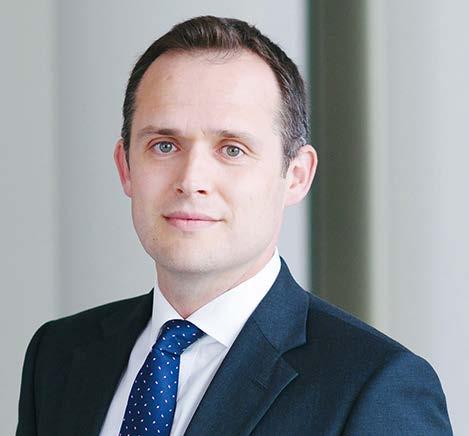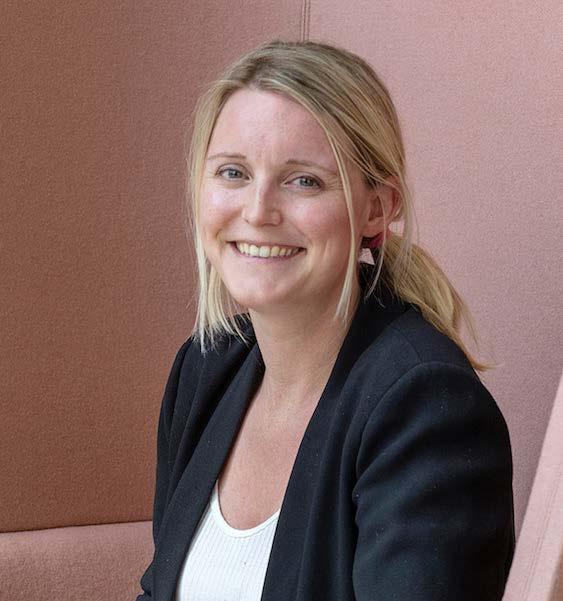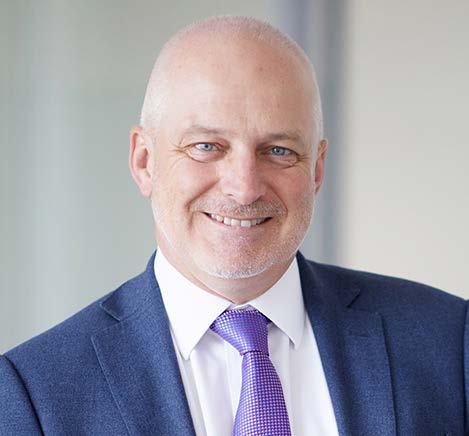The Oxford Advantage
An innovation super-cluster
Start



Mills & Reeve and Bidwells have partnered together to deliver a unique insight into the Oxford, Cambridge, London arc – often called the ‘Golden Triangle’ – that will explore the way businesses in the technology, life sciences and real estate sectors work together.
These vital industry sectors each stand on their own strengths and are in many ways world leaders. Yet when working together, supported by a strong advisory community and the infrastructure they need for success, they truly become a science and technology superpower.
Throughout 2024, Mills & Reeve and Bidwells will hold three roundtable discussions where we will explore these themes further. We will celebrate the very best that business and academia deliver when working together. We will explore the legislative and funding challenges faced alongside the infrastructure investment needed to ensure continued leadership on the world’s stage.
Roundtable events will be held in Oxford where we will explore the ambitions of science and technology businesses, Cambridge where we will bring life sciences businesses together, and London where we will discuss real estate and the investment needed to ensure continued success. We will explore each location’s offer, nuances and challenges, as well as the wider picture.
The first of these events took place in Oxford. The focus of the discussion was on how Oxfordshire is well-placed to support the Government’s ambitions to be a science and tech superpower and the changing face of science and technology.
In this white paper we share with you the highlights of that discussion.
We would like to thank those who attended and participated:
Katie Nelson – Senior Asset Manager Science Partner, Kadans
Colin Brown – Development Director, Mission Street
Steve Burgess – CEO, The Oxford Trust
Sarah Haywood – Managing Director, Advanced Oxford
Chris Busby – Co-Founder and CEO, ICE Oxford
Philip Campbell – Commercial Director, Milton Park
Anna Strongman – Chief Executive Officer, Oxford University Development
David Williams – Senior Director, Advanced Research Clusters
Karen Maher – General Counsel, Advanced Research Clusters
Ben Copithorne – Managing Director, Camargue
Jitesh Patel – Development Manager, The Oxford Science Park
Deborah Spencer – Senior Innovation and Business Partnerships Manager, University of Oxford Mathematical, Physical and Life Sciences D ivision
Duncan May – Partner, Bidwells
Emily Slupek – Partner, Bidwells
Douglas McDonald – Partner and Head of Technology, Mills & Reeve
Mark Pearce – Partner, Mills & Reeve
Laura Ludlow – Principal Associate, Mills & Reeve
What do business, academia and the advisory community need to do to ensure Oxfordshire builds on its position as a leading science, tech and innovation cluster?
Oxfordshire is a science and technology super-cluster. Its universities, science parks, academics, investors, companies and its thriving advisory community all play a vital part. The region has 2,950 high-tech businesses employing nearly 29,000 people, with the county’s knowledge economy contributing £2.4 billion to the UK economy every year.
The county boasts a thriving innovation ecosystem with a flourishing community of spin-out companies and start-ups. An astonishing 64% of the region’s businesses are innovationactive with 5,700 patent applications made by Oxfordshirebased firms and institutions in the last five years.
Culham and Harwell stand out as home to the world’s leading university and public research institutions, sitting alongside a network of spin-out companies and investors supporting world-beating high-growth companies.
Whilst a rival to Cambridge and London, Oxford and the wider county is part of an integrated network. These centres of scientific excellence will of course continue to compete but recognise that they are stronger together.
Yet, Oxfordshire cannot rest on its previous successes. Its position in the UK and on the world stage is constantly being challenged. But in those challenges are opportunities.
Here we set out the four key challenges facing Oxfordshire and the opportunities they bring.

Access to talent is fundamental to a successful innovation cluster. Yet diversity is needed in that talent pool.
“Oxfordshire has the high levels of talent needed to support innovation. We have the knowledge and expertise,” says one participant. But “forty per cent of tech business staff do not need to be degree level qualified”.
Oxfordshire needs diversity of employment. “It has to be more than a research economy.”
The difference between a spinout and a successful business is that one has the dynamic mix of skills needed to run that business – the administrators and managers in HR, finance, facilities and marketing and sales.
It is “great that Oxford has these fantastic academics and the brilliant education establishments,” said one participant, “but what about the other parts of the business that are crucial – your lab managers, front of house staff.”
For example, research has shown that science and tech businesses rarely hire any form of HR function until they hit the 20-25 employee mark. It means that scientists are often put into operational roles for which
they are not trained or equipped to do. “It is not surprising that mistakes happen,” participants point out. “Those first HR appointments often spend time unpicking the last few years of activity before they can work at that strategic level.”
Leadership in early-stage organisations is often missing and that, participants agreed, hampers organisational growth and development. “It is at the heart of the UK’s productivity challenge,” says one, with another adding “the soft infrastructure in the UK is missing”.
Questions were raised whether Oxford and the wider county has the talent resource to support large technology and life sciences manufacturing.
“We have the momentum, the brand and the ‘diamonds’ – those stand-out businesses - that will keep the 60% of the workforce that needs a degree in Oxfordshire,” said one participant, “but what of the rest?”
The picture is, however, far from gloomy. Oxfordshire has a strong tradition in manufacturing. Since the early 1900s Oxford has been the home to automotive manufacturing drawing on the diverse talent pool those industries needed to grow and thrive. It is a tradition echoed across the county with its globally recognised motor-racing engineering excellence. That heritage and expertise has not been lost.
The skills gap is closing. Academia and businesses are already working together with educators to raise awareness of the skills that are needed and alternative career routes into technology and life sciences businesses. Increasingly the lack of a degree is no longer a barrier to a fulfilling career in the life sciences and technology sectors. The apprenticeship route is growing in popularity, with businesses investing in growing and developing the talent they need. And as those businesses grow, that will accelerate.
The need for professional support in earlystage businesses is also recognised and, importantly, valued. Academia supports spin-out companies, investors bring more than cash to the business they support, and landlords providing lab space are increasingly offering the technician support that growing businesses need.
The story of success is the story of job creation and of the communities it builds and supports.


“Oxfordshire is recognised as one of the top science and innovation clusters in the world. The region has a thriving eco-system and our universities, science parks, academics, investors, companies and advisory community all play a crucial part. From COVID-19 vaccines to connected and autonomous vehicles and new sources of energy; innovation from Oxford is tackling some of the biggest challenges facing our world. The Government’s continued ambitions are to make the UK a science and tech superpower and the region a beacon for innovation. There are plenty of opportunities for business, academic and advisory communities to collaborate to support this ambition and the growth and scale of the sector. A national perspective is needed.”
Douglas McDonald, Partner and Head of Technology, Mills & ReeveThere are currently 43 active unicorns headquartered in the UK, whilst a further eight have exited the private market since achieving unicorn status. Their role as a significant employer is widely recognised with the ability to attract and retain top talent. But what is perhaps a little less appreciated is impact they have on the communities where they are located and the businesses that surround them. Put bluntly, the value a unicorn business has on businesses they work with and the wider talent pool is something that needs greater recognition.
A successful unicorn will, in many instances, attract like-minded companies creating a strong cluster. This will include key suppliers and often competitors, creating opportunities for collaboration.
In turn, this too will attract the talent these businesses need to thrive and grow – and without access to talent they have little or no option but to relocate. It is in the interests of all stakeholders to ensure access to talent and to provide the skills that unicorns, and the clusters they create, need to ensure their continued growth and to keep them in Oxfordshire.
43There are currently 43 active unicorns headquartered in the UK

Oxford continues to see good demand for offices and laboratories, reflecting the diversity of the city’s science and tech cluster. Total takeup across the two in 2023 was 415,000 sq ft, matching the long-term average.
While life sciences accounted for two-thirds of office and lab take-up, there was also good demand from firms involved in other areas of tech including green energy and space.
Prime office rents in the city centre rose to £60 per sq ft and prime laboratory rents increased to £76.50 per sq ft. Although the slowdown in venture capital has tempered demand from scale-up businesses looking for office and lab space of 10,000 sq ft+ in Oxford, there is still a healthy pipeline of spin-outs from the University, and requirements for smaller units <10,000 sq ft have been stable. That should lead to a fall in laboratory vacancies this year, following a temporary spike at the end of 2023 due to the delivery of new space.
There are multiple schemes under construction, or in the planning stage, at the majority of parks across the county. Pipeline for 2025/26 will see significant uplift in supply, so there is a danger of these developments “landing all at the same time”. This may influence the supply and demand balance compared to the current environment where we are seeing demand remain strong and supply low.
As Oxford spinouts grow into successful medium and large-sized businesses, there is a risk that those companies may consider leaving Oxfordshire. But with the incoming supply the need to relocate outside of the county will be diminished.
It is important to appreciate that R&D companies will generally prefer to cluster together to collaborate on ideas but, as they grow and start to manufacture, larger facilities are required, and these are better suited to out of town locations where it is more economic to operate larger facilities as they tend to command lower rent and are less reliant on talent attraction, so have a lesser drive to be central.
A county-wide, and indeed national, perspective is needed if we are to effectively and successfully support the full ecosystem and life cycle of the science sector.


With the ever-growing science and technology cluster, the increasing demands on supply present the opportunity for landlords to develop newer, bigger, better facilities to cater for the ever-growing demand from rapid-growth companies.
Participants agreed, Oxfordshire is a dynamic and exciting landscape. But we all need to shout more about Oxford’s success, be bolder in our promotion of the brand and the innovation in the region on a global stage. Space offered and under development here extends way beyond the life sciences sector. R&D and highvalue manufacturing facilities extend to electric vehicle and battery assembly, green and new energy sources, and the region’s expertise in motor racing engineering to name a few.
Oxfordshire is, of course, already home to world-class science parks, including Harwell, The Oxford Science Park and Culham, but the county and the science sector “is not an island”. The supercluster is made up of the other hubs of London and Cambridge, which help to grow the prestige of the UK on the global stage and as a result grow the pie from which Oxford can take its piece. As the Oxfordshire cluster develops locations
further afield in the county and wider UK, it will benefit from the network of peripheral requirements, such as growing demand for accommodation, leisure, amenities and supporting facilities.
It raises the interesting question of whether, as the Oxford cluster matures, how soon until there are opportunities to partner with other UK locations? Bedford is the target for potential major investment and Bristol, Milton Keynes and Birmingham all provide opportunities for Oxfordshire-based businesses to expand yet remain within the Oxfordshire halo.
As a rapid-growth company moves from incubator to their first premises they leave the support network provided to early-stage companies. There are many operational factors that need to be considered and are easily overlooked despite being fundamental to S&T company operations. For example, as a serviced space offering which could include advice on equipment validation, lab operations, health and safety and so on.

“With funding being harder for rapid growth companies to obtain, they are forced to consider a more tempered growth pattern. Growing and moving as needed rather than taking expensive, oversized facilities to grow into which has reduced the scale of demand from these companies. However, as the Oxfordshire science and tech cluster grows the ever-increasing number of rapid growth companies emerging into the market will rebalance and improve the demand levels.”
Duncan May, Partner, Bidwells
Central to fully leveraging the potential of Oxfordshire is the enhancement of its infrastructure. This entails not merely facilitating movement within the region but also ensuring access to affordable housing, power and robust digital connectivity. These components are critical to the region’s overall vitality and sustainability.
However, the attendees noted the path to infrastructural improvement is fraught with political complexities. Challenges such as housing development ignite contentious debates in Oxfordshire, exacerbating the minutiae of regional planning and the delicate balance between growth and preservation. The pressing demand for diverse housing options—spanning marketprice, affordable, and rental segments— highlights the need for joined-up, strong willed strategic urban planning that respects both the green belt’s sanctity and the necessity for expansion to support the City.
Transportation is also a poignant issue in the region, cited by the group as a major impediment to people movement, needed to enable business operations and growth. Participants pointed to the underinvestment in transport infrastructure and the inefficiencies of the current system as significant barriers to attracting and retaining talent, S&T businesses and external investment. The current transport system, characterised by its lack of accessibility, falls short of meeting user needs, indicating a dire need for a more cohesive approach. Furthermore, the reliance on cars persists because there is an absence of viable alternatives, thereby hampering efforts to promote more sustainable modes of transport.
The region’s power supply infrastructure also presents challenges for Oxfordshire’s burgeoning industrial and innovation sectors. The existing discrepancy between
power supply and demand is poised to intensify with the planned expansion of innovation campuses and science parks, signalling a potential bottleneck for future growth.
The Infrastructure Opportunity presents a unique junction where challenges can be transformed into collaborative achievements, requiring an integrated approach across various sectors. It was universally agreed with the group that addressing Oxfordshire’s infrastructure needs goes beyond the capabilities of any single entity. The engagement of local governments, industries, academia, and the community is paramount. Such cooperation holds the promise of not only fulfilling the region’s infrastructure requirements but also promoting a sustainable and prosperous future for its inhabitants and businesses.
The development of Oxfordshire’s innovation hubs into a cohesive network presents two primary considerations. Firstly, the enhancement of bus and rail connections among science parks and campuses is crucial. A number of participants already have agreements in place whereby local transport providers are subsidised, allowing them to offer a timely transport service that operates in a radius around their innovation districts and connects to the local train station. Efficient, regular, and affordable transport solutions are essential for improving access to workplaces, thereby facilitating a more
inclusive and dynamic labour market. Although closer proximity of housing to workplaces could diminish transport demand, the diversity of the labour market underscores the ongoing need for comprehensive transport solutions within the ecosystem.
Upgrades to the national grid are anticipated, with regional provider SSEN preparing for system enhancements in 2028 (though it is suggested this may not happen until at least 2030). Strengthening ties with SSEN and advocating for a collective regional voice could leverage an account management system, fostering clearer communication and alignment of expectations. The current lack of transparency regarding power reservations for the upcoming decade versus actual usage necessitates a strategic approach to forecasting demand over the next 5 to 10 years.
It is critical that Oxfordshire’s vision for its transportation system embraces a countywide perspective, extending beyond the confines of Oxford city. Critical investments in rapid bus routes and rail infrastructure, including the East-West rail, the Banbury to Birmingham line, and connections linking Begbroke, Oxford, Culham, Didcot, and the Cowley branch line, are essential. The expeditious realisation of these infrastructure projects is key to supporting the region’s growth and development.

“The Infrastructure Opportunity underscores the need for a concerted, multi-stakeholder approach to infrastructure development in Oxfordshire. By fostering collaboration across governmental, industrial, academic, and community sectors, the region can not only overcome its present challenges but also lay the groundwork for a future characterized by enhanced connectivity, sustainability, and prosperity. This needs commitment to the growth of the region from central government and local authorities, businesses and investors alike.”
Emily Slupek, Partner, BidwellsYet funding remains a challenge. It remains sporadic and securing funding can take up an inordinate amount of founders’ time. The question of how we close the funding gap remains.
It is recognised that angel investors are active in Oxford, but participants believe they could do more. Angel investors in Oxford “tend not to have deep pockets,” said one participant. Oxford Innovation Finance, the home of the Oxford Innovation Opportunity Network (OION), whilst being one of the oldest and largest business angel networks in the UK, does not have the level of experienced and deep-pocketed type of angel investors that Cambridge Angels (with its deliberately modest size and selective nature of membership) is able to boast.
Another participant added there is “very poor representation from family office investors” with venture capital investors also “under-represented”.
Oxford Science Enterprises (OSE), which has raised more than £850m since 2015, has invested in spin-outs from Oxford University across life sciences, health tech and deep tech and has been instrumental in the creation and support of some
exceptional world leading spin-outs from start-up through to scale-up. However, the relative lack of active UK, European and US venture capital funds co-investing in these businesses or providing a more competitive funding landscape in the Oxford region contrasts significantly with the very active and diverse VC investor landscapes in both London and Cambridge.
If you are part of the University of Oxford “you are extremely well supported in company creation,” explains one participant. It is “one of the better places in the UK to spin-out.” But outside its embrace “you are largely on your own”.
It was agreed that even where investment is available businesses “struggle to find it”.
Participants recognise that it has developed considerably over the past decade, but lags behind Cambridge and London. The international “marketing of Oxford” has historically been lacking but is now ramping up.
There is clearly more that needs to be done to “encourage and grow the investment landscape”.
Despite a challenging funding environment over the last 12 months, making it tough for businesses wanting to raise money and for investment funds, equity funding is still available. There remains a lot of “dry powder” in the ecosystem, with venture
capital and private equity funds having raised money over the last couple of years and not yet fully invested. They need to invest those funds as their investment fund life cycles are progressing.


Further, we also see that pre-seed and seed-funding has been less affected than later stage Series B, C and beyond funding rounds. So, if the University and OSE can work more collaboratively with other early-stage VC investors at an earlier stage to encourage them to get involved in the investment landscape in Oxfordshire, this could start to unlock more capital to support the spin-outs and start-ups.
Another source of capital which could help address the funding concerns is corporate venture capital (CVC).
Increasingly, large corporates are embracing venture investment activity and co-investing alongside VC and equity investors in fast growth tech and life sciences businesses on Series A rounds and above. This strategic participation by a large corporate in an emerging business is often a means to enable them to secure a relationship with an early-stage business which has developed something of critical interest or importance to that large corporate. It allows them to innovate in a way it is unable to do within its existing corporate set up and structure and ultimately potentially to acquire in that business. CVC funding is not without its risks for emerging businesses, but these can be managed within a strong investor syndicate and with good professional advice.

“Although Oxford has long been one of Europe’s top tech hub spots for investment there needs to be more robust investment from private investors and VCs. To secure this investment Oxford should be better at telling its story on the international stage. And it has a brilliant story to tell – the Harwell Science and Innovation Campus is one of the leading science and innovation campuses in Europe, home to Diamond Light Source, the UK’s national synchrotron light source science facility and Moderna has just announced that it has selected Harwell as the location for its Moderna Innovation and Technology Centre as well as one of the world’s great universities at its heart. There are also major development schemes at Oxford North, Begbroke and Oxford Science Parks to support the tech and innovation ecosystem.”
Mark Pearce, Partner, Mills & ReeveWe’re centred on achieving more for our clients, their businesses and the wider communities we serve. We are a national law firm and opened our Oxford office, the seventh across the UK, in 2022.
Mills & Reeve is the legal adviser behind some of the UK’s most successful technology businesses including Ocado, Starship Technologies, Lotus, ARM, Siemens Healthcare, Domino Printing, Silverraill Technologies.
We act for entrepreneurs leading fast-growth technology start-ups and spin-outs through to IPO, and work closely with global technology giants and their investors. Our specialist team provide the full range of legal services that you need, always with a focus on your objectives.
We pride ourselves on our bespoke service. We are the UKs no.1 property consultant for S&T. We’ve been advising more than 60 science and innovation parks across the Oxford to Cambridge Arc, and beyond, over the last five decades - the science and technology sector runs through the veins of our business.
We work with UK and International science park owners, developers, tech businesses and some of the world’s largest university spin-out investment funds, on R&D labs, offices, manufacturing facilities and data centres.
In a region that is home to the most significant life sciences and space clusters in Europe, we bring together investors and developers to support the growth of the knowledge economy, attracting the talent and pioneering technologies that are changing the world.